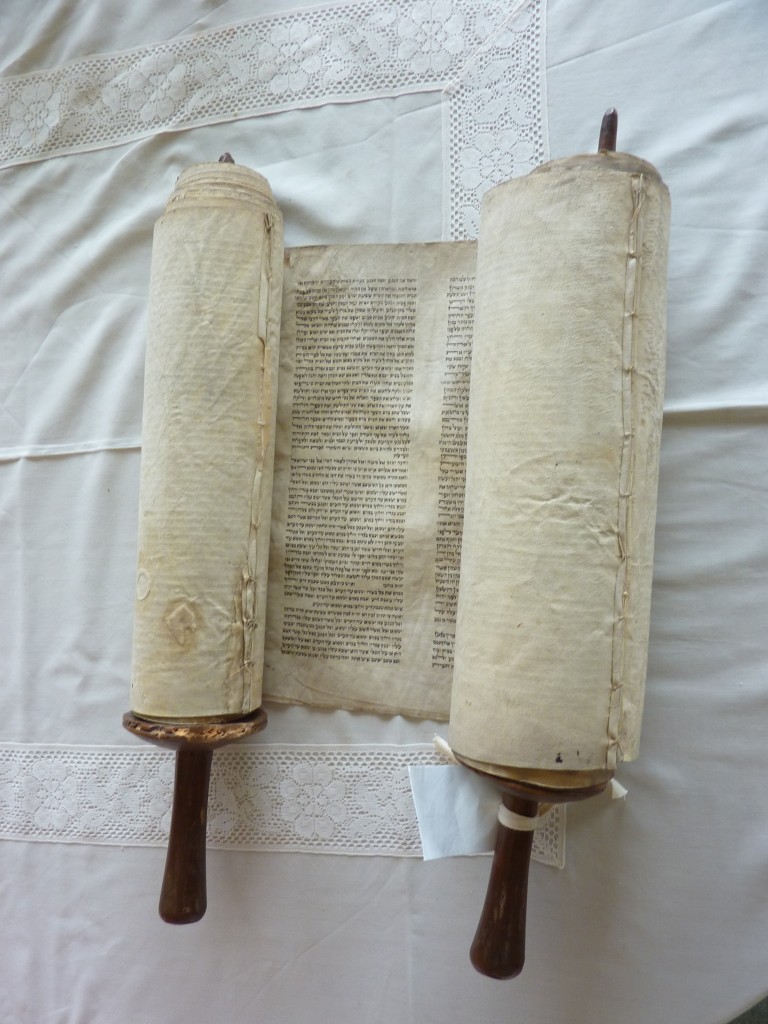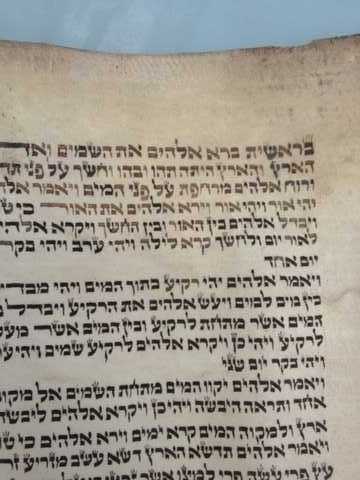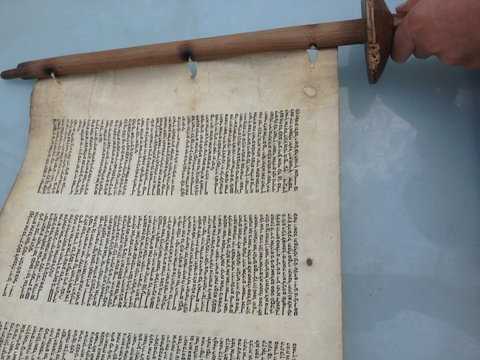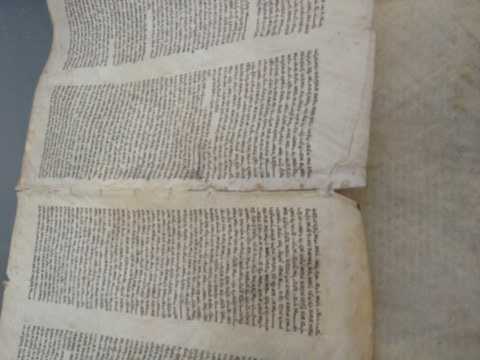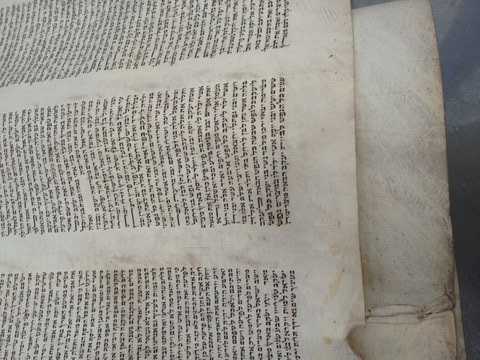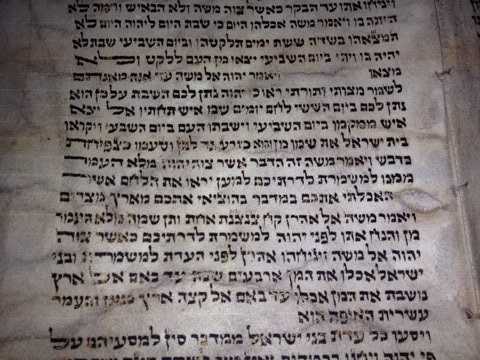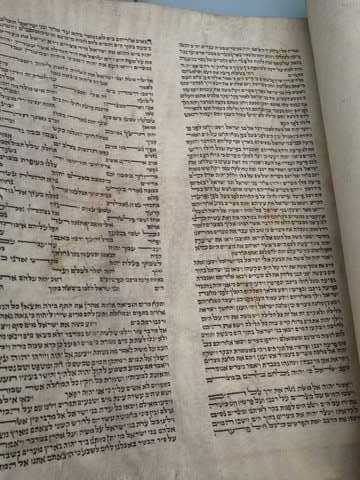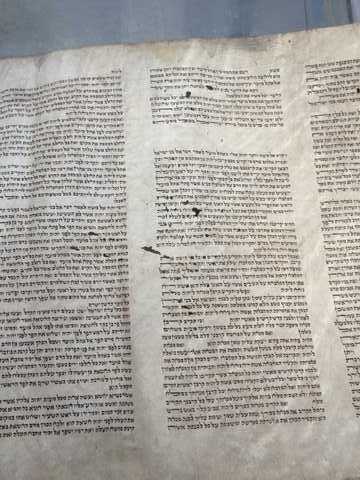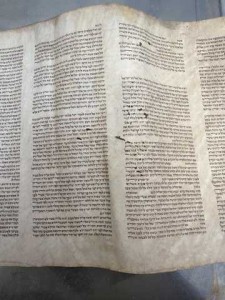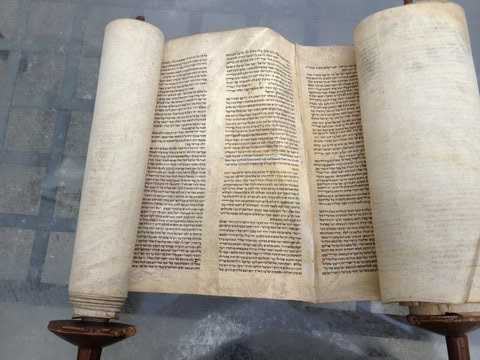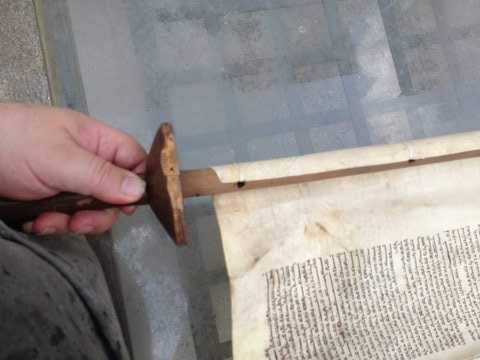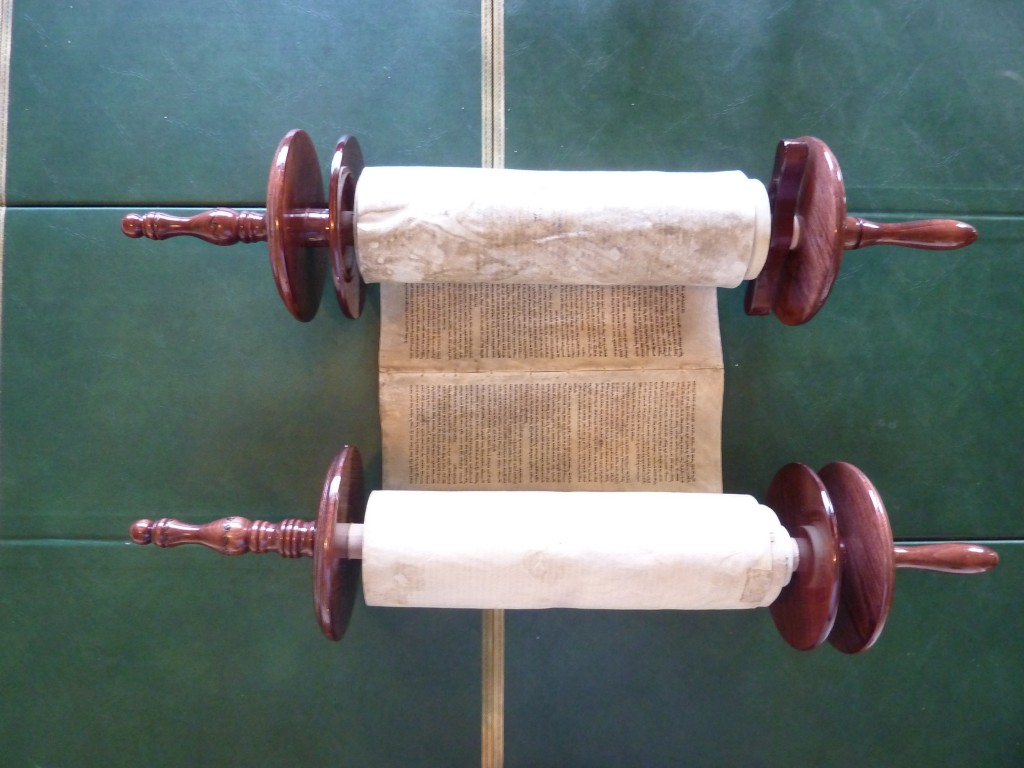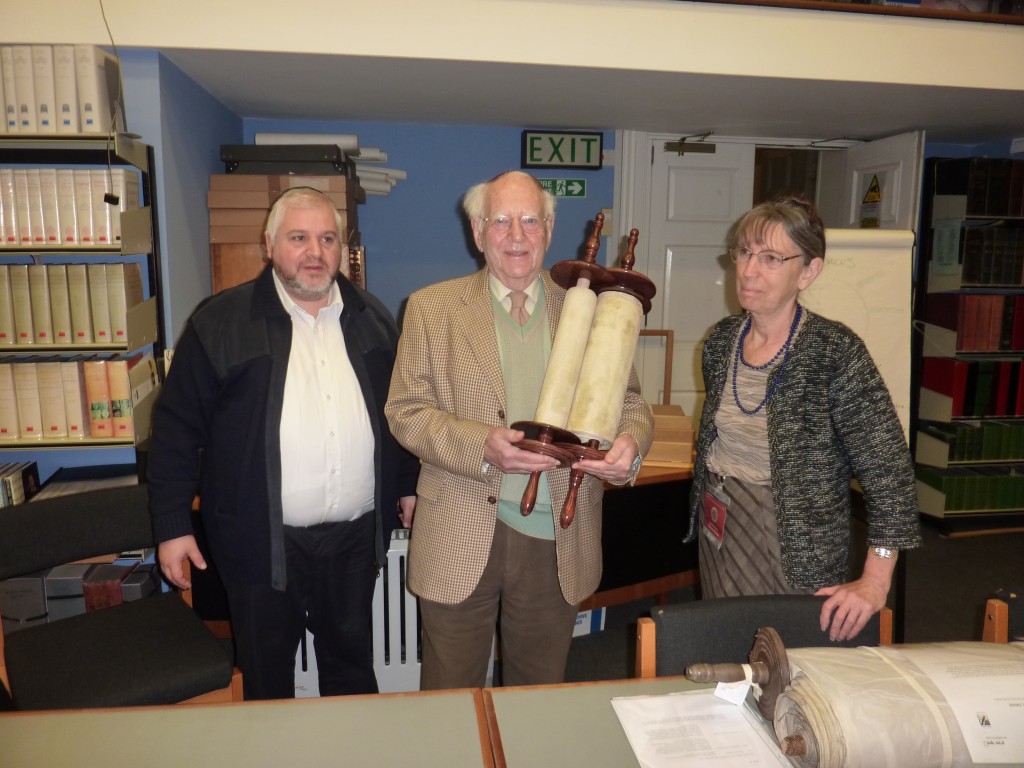Torah Scrolls & Yad
Watch our Torah scroll on BBC's Antiques Roadshow!
Torah scroll returned after 100 years
On Monday, 20th May 2013 following nine years of negotiations between the Royal Cornwall Museum in Truro, and members of Kehillat Kernow and the greater Jewish community, the Museum returned a 250 year old Torah Scroll used in the Falmouth Synagogue in the 18th and 19th centuries to Kehillat Kernow, the present Jewish Community of Cornwall.
This unprecedented, historic event cannot be under-estimated in terms of its incalculable value to the spiritual life of this community. A week later there was a formal hand-over and celebration at the museum and a procession to the Municipal Building, Boscawen Street where there was a special religious service in the Town Hall followed by speeches and a buffet lunch in the Council Chambers with all those from the Museum and the wider Jewish community involved invited to attend.

Why is the scroll important to us?
A Sefer Torah (Torah Scroll), is one of the holiest objects in the Jewish religion. It forms the central, most serious aspect of every Shabbat and almost all festival services. It is integral in rites of passage (Bar and Bat Mitzvahs, baby blessings…), ceremonies and is essential for educational purposes.
It is considered so precious that the parchment, upon which all the letters are hand-written, cannot be touched. Indeed a “yad,” a pointer, is used for reading to ensure this and the Torah itself is covered and wrapped in its mantle or prayer shawl when not unrolled to be read. It is meant to be stored in an Ark (a specially built container), under dry climatic conditions when not in use. Because it is so preciously cared for, it is not uncommon for synagogues to be using Torah Scrolls which are hundreds of years old.
Routine examination of the parchment and each individual letter is de rigueur. In case of damage to either the parchment, Etz Hayim (wooden spindles upon which the Torah Scroll is rolled), or letters and a certified sofer (Torah scribe), would examine all aspects and make necessary repairs.
The Scroll is of particular importance not only in terms of continuity as it was used in the Falmouth Synagogue, but is of immense historical communal relevance and is of incalculable religious significance for us as a recognised religious community. A Torah Scroll is meant to be used; if a scroll can no longer be used, according to Jewish tradition, it must either be buried in a Jewish cemetery or held for safekeeping in a recognised institution such as the Royal Cornwall Museum. It may not be destroyed. In the case of this Torah Scroll, the Scroll has been restored, repaired, and will be used.
From an ethical, religious, communal, and historical standpoint, this Scroll clearly deserved to be restored and used by an accredited Jewish community who would safeguard and treasure it.
About this scroll
The Sefer Torah is Ashkenazi – medium clear writing on mashuach (pasted) parchment. It is light in weight having a parchment size of 33 cm with 53 Lines.
This Sefer Torah is more than 250 years old and comes from the German Bohemian areas, based on the type of writing. As it was in the Falmouth community for many years and being small, it has certainly had good use.
The Sefer Torah’s letters were in bad condition in every column throughout due to its age and use. The Sefer Torah had potential, subject to the provision that all the letters needed attention as well as the holes in the parchment needed careful repair. Bernard Benarroch, a Certified Torah Scribe asked by Kehillat Kernow to advise them, when he first saw the scroll, stated that in normal circumstances, he would not attempt to repair or restore this type of Sefer Torah, due to the many hours required to touch up every single letter. However he said “it would be an honour to restore this Sefer as I know that it is intrinsically important to the Cornwall community.” The Scroll has taken six months to repair.
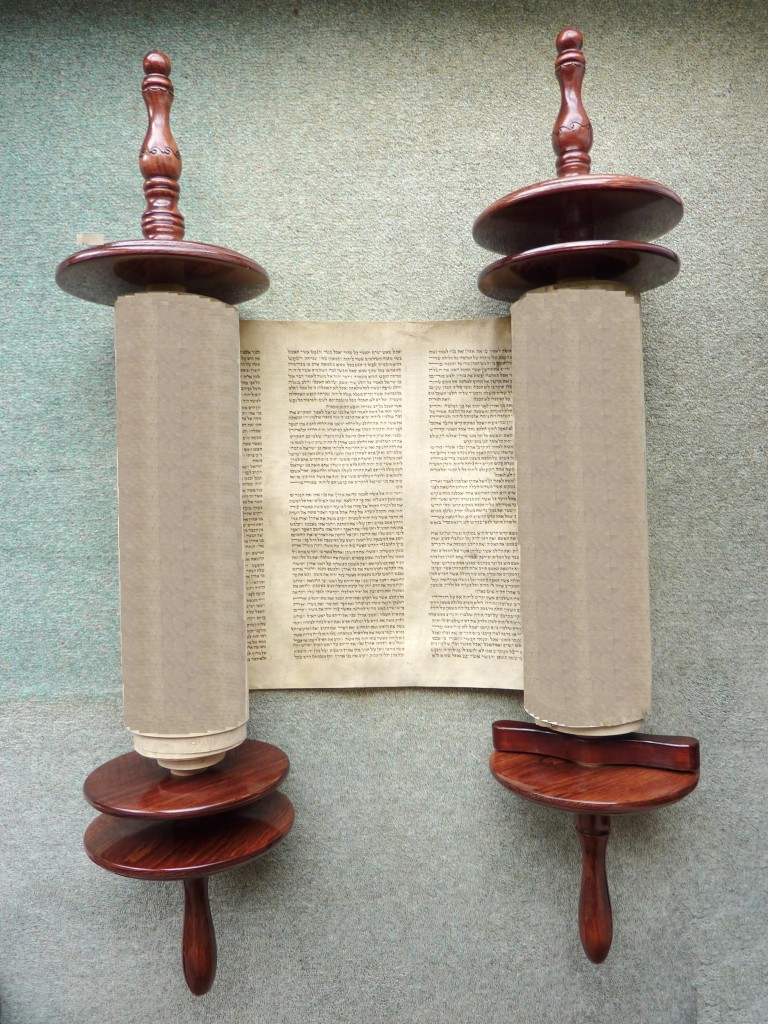
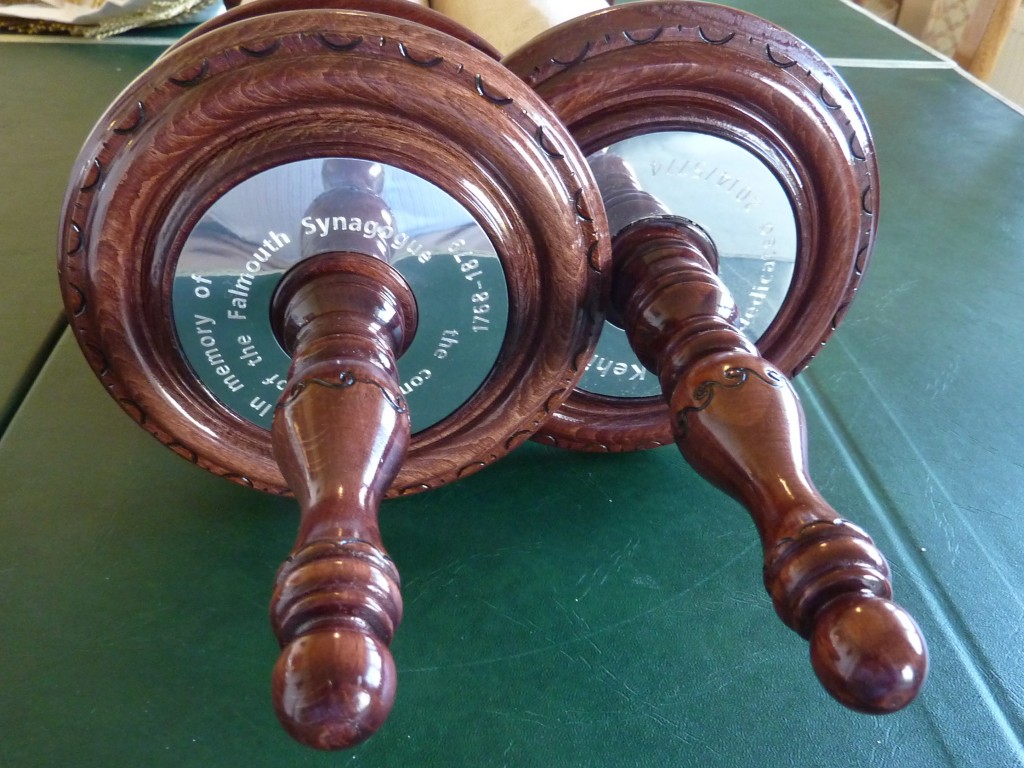
Restoration and timeline of events
News articles
-
Antiques Roadshow-Kehillat Kernow Scroll
-
Scroll Rededication covered by BBC Spotlight
-
Sermon and Photos from Scroll Rededication Ceremony
-
Scroll Rededication Ceremony
-
The Scroll Comes Home!
-
Torah Scroll Celebration & Procession
-
The Torah Scroll from Exeter Synagogue
-
A future for the Torah scrolls of Cornwall
Scroll Mantle
This mantle was commissioned on Harvey Kurzfield’s resignation as Chairman to commemorate sixteen years as Chairman. It was made by Anne Hearle.
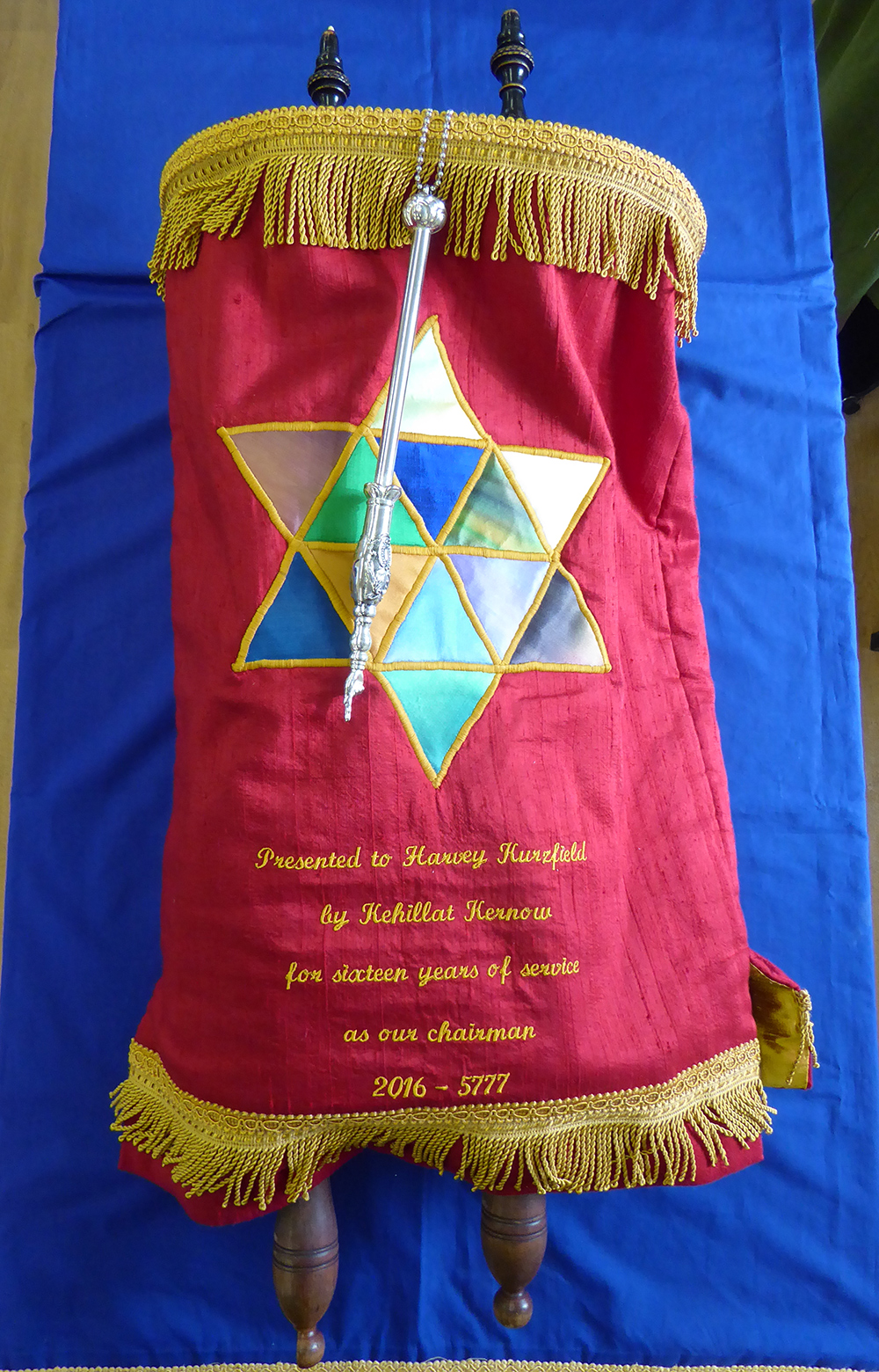
Yad
A Yad was recently generously given to Kehillat Kernow by Dr and Mrs D Temkin of London and Penzance, to be used with our new Torah Scroll.
It has in Hebrew in ‘cut out lettering’ on its handle ‘v’zot h’Torah’ – ‘this is the Torah’ very appropriately.
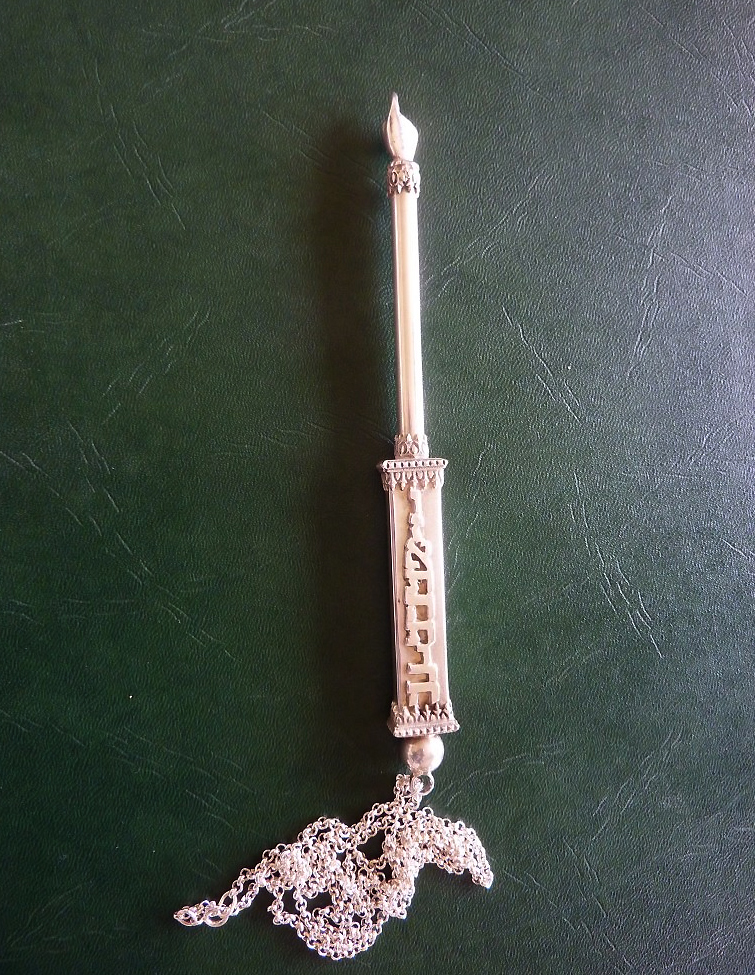
Scrolls in the news
We have posted about the Torah Scrolls over the years, so check through the past news articles. We will be moving some of this page’s content to articles around the dates they occured.

